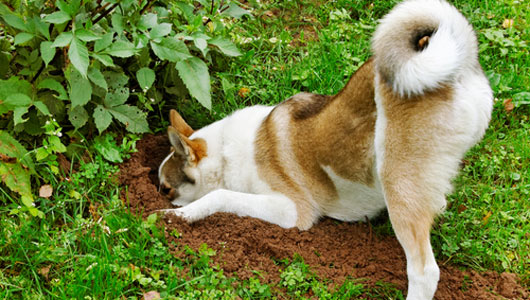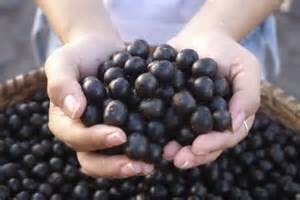For hundreds of years, the human immune system has relied on a regular stream of biological tourists for health, but when things get too squeaky clean, there’s a problem. An easy fix: Go dig in the dirt for a while.

Sure, a backyard garden is a place of beauty, an attraction for birds, insects, and wildlife, and a personalized market for the most local produce imaginable, but did you know that your garden can also tune up your immune system, ward off depression, and even make you smarter?
It’s been nearly 25 years since Dr. David Strachan first proposed the “Hygiene Hypothesis” linking skyrocketing incidences of immune system disorders like allergies and asthma to the hyper-clean environments that people in the developed world inhabited in the second half of the 20th century.
As public health officials and immunologists struggled to understand the swelling ranks of the world’s wealthy sick, the Hygiene Hypothesis provided an intriguing basis for research. Perhaps most significantly, it’s given us a much clearer picture of the subtle but crucial ways that the human organism co-evolved with the broader microbial ecology around it. Rather than looking at a human being as a standalone entity, which somehow arose unencumbered from the evolutionary process, we can now say that our bodies are themselves communities of organisms, most of which are not, in fact, “us.”
A given square inch of soil is home to some 4 billion tiny creatures — bacteria, algae, fungi, protozoa, nematodes and more — living out their lives and making various byproducts from their own metabolic functions. For most of humanity’s time on Earth, we have encountered these masses of organisms all day, every day. We constantly consumed a thriving ecology in our food, water, and even in our breath.
Some of these organisms became the gut flora we’ve come to know as probiotics, while others appear to have volunteered critical pieces of our immunological arsenal. And because the immune system could count on a steady stream of these biological tourists over the course of its lifetime, there was never a reason to develop the capabilities that they provided.
But in the 20th century, this co-evolutionary arrangement was suddenly upended in favor of hospital births, pasteurized foods, chlorinated tap water, and sanitized indoor environments where we live, go to school and work. So our immune systems, deprived of what some researchers now refer to as “old friend” organisms, suddenly lacked key components for operations, and for many of us, has gone a little crazy.
This is the Hygiene Hypothesis, version 2.0. The concern is no longer that the wealthy parts of the world live in environments that are too clean, but rather that we live in environments where we have isolated ourselves from the microbial communities and biological processes that created us in the first place.
The specifics of immunoregulation by our “old friends” remain somewhat mysterious, but data increasingly suggest benefits from ongoing exposure to the world hidden within the soil. It’s great news for gardeners. Aside from the pleasure they get from time spent in the garden, it turns out they’ve been giving their immune systems a tune up every summer, too.
And with new research suggesting a link between inflammation — a key indicator of immune dysregulation — and a myriad of diseases including depression, it could be that a little patch of vegetables or flowers packs the same punch as a bottle of anti-depressant medication.
Meet Mycobacterium vaccae, one of the better known “old friend” species. M. vaccae is a common, non-pathogenic soil bacterium that we typically ingest as we breathe when we’re outside in nature. Researchers have found that when cancer patients are exposed to M. vaccae, they report improved mood, energy and vitality.
If you’re feeling down, or even just a bit mentally sluggish, exposure to M. vaccae may be just the pick-me-up you’re looking for. In experiments on mice, M. vaccae has been shown to improve learning and reduce stress and anxiety by encouraging the brain to produce more serotonin. Serotonin doesn’t just lift the mood and help with memory formation; it also plays a role in regulating appetite, sleep and other basic functions vital to a happy, healthy life.
Not only does the garden let you mingle with “old friend” organisms, but simply being outside in the sun gives the body a chance to make some vitamin D. The skin needs sunlight to produce the compound, and in much of the developed world, where so much of life happens indoors, vitamin D deficiencies are the norm. Which is really a shame, since it both inhibits inflammation and improves mood.
Those priobiotic bugs in our digestive tract play an important role in a healthy immune system, too. When mice are raised with germ-free GI tracts, they display poor immunity and high reactivity to allergens. Once inoculated with common gut flora, their immune responses become more normal and their susceptibility to inflammatory diseases decreases. Encourage a healthy ecology in your body by incorporating cultured foods in your diet. Sauerkraut and kimchi are fun (and tasty!) projects to try at home, especially with kids. And if you garden, you have the added benefit of putting your own produce, and your own microbial neighborhood, into the mix.
The research is pretty straightforward these days. The presence of certain organisms and environmental factors provides the immune system with information it needs to function, properly recognizing danger while ignoring harmless factors, and correctly modulating the body’s inflammatory response. And while basic sanitation and good habits like hand washing have saved countless lives over the last century, it’s high time that we welcome back some of the organisms that helped make us who we are today.
So the next time you pull a weed, plant a seed, or put some home grown veggies on a plate, take a moment to marvel at the unseen community you’re engaging. Your garden is more than just a delight for the senses — it’s also a meeting place for some of your body’s oldest friends, and an institution of higher learning for your immune system.










 WASHINGTON – May 8 –
WASHINGTON – May 8 – 
Recent Comments